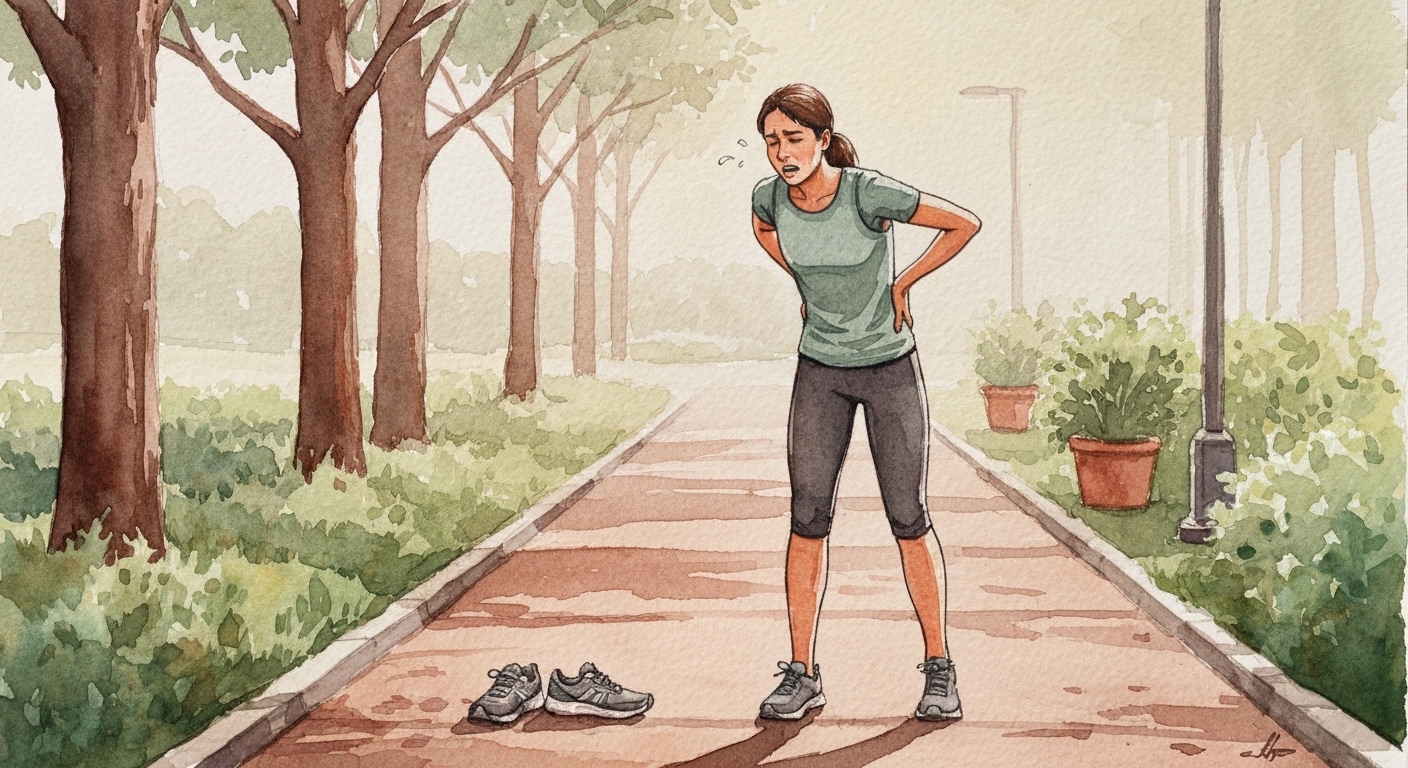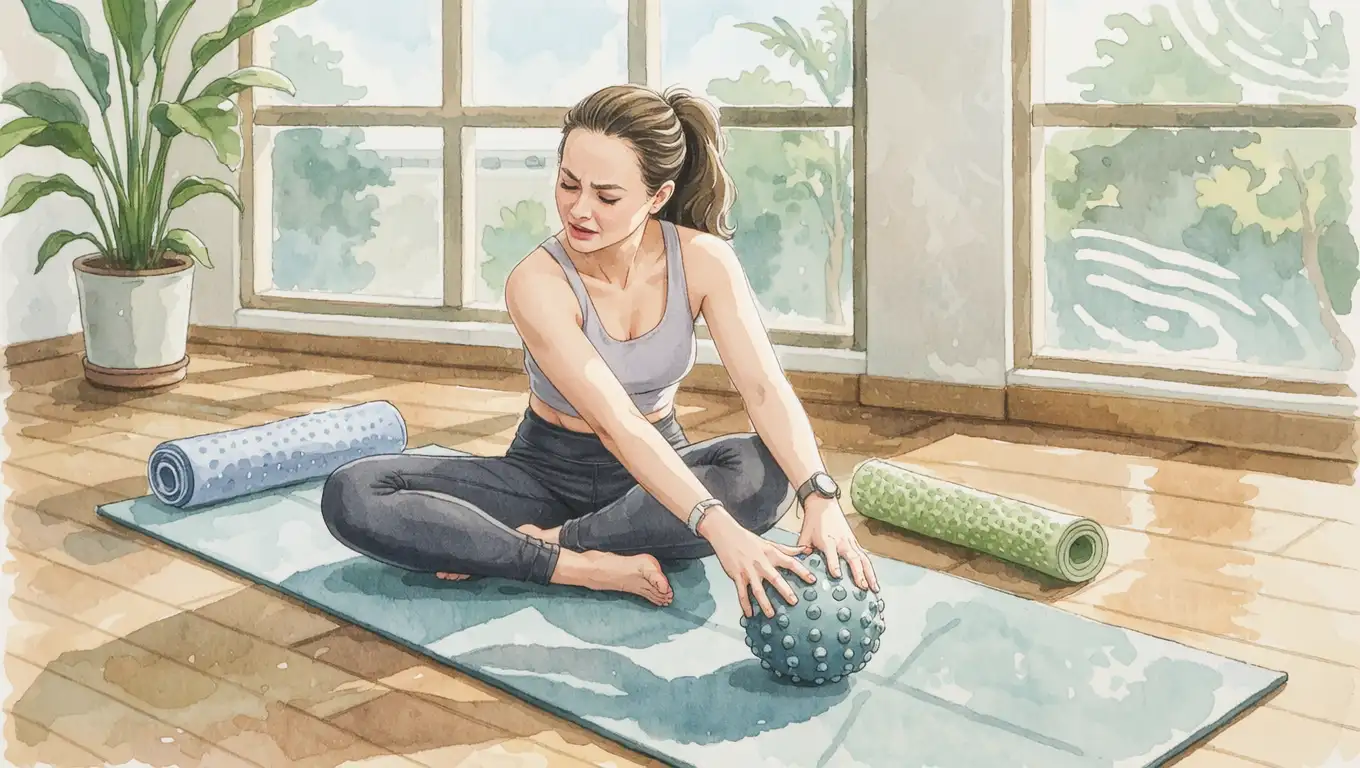When your lower back is aching, every movement can feel like a risk. Your instinct might be to lie down, stay still, and wait for the pain to pass. For years, prolonged rest was the standard advice. But what if the simple act of putting one foot in front of the other is actually one of the most effective things you can do? It can feel confusing and even a little scary, but for most types of common lower back pain, walking is not only safe—it’s actively recommended by doctors and physical therapists as a cornerstone of recovery.
If you’re dealing with the frustration of back pain, you are looking for clear, trustworthy answers. As a medical writer with a deep focus on orthopedic health, I’ve seen how this simple question weighs on patients. This guide is here to explain the science behind why walking helps, how to do it safely and effectively, and, just as importantly, when you need to be cautious. We will break down the mechanics in simple terms to help you move with confidence and take an active role in managing your back pain.
Key Takeaways
- Movement is Medicine: For most common, non-specific lower back pain, gentle movement like walking is better than bed rest. It helps break the cycle of pain and stiffness.
- Walking Strengthens Your Support System: Walking engages the core and back muscles that stabilize your spine, acting as a natural brace.
- It Feeds Your Spine: The motion of walking increases blood flow, delivering vital oxygen and nutrients to your spinal discs and tissues to help them stay healthy.
- Start Slow and Short: You don’t need to run a marathon. Begin with short, 5-10 minute walks and gradually increase your duration as your body allows.
- Form Matters Most: Walking with good posture—head up, shoulders back, core engaged—is crucial to getting the benefits without adding extra strain.
- Pain is Your Guide: A mild level of discomfort is okay, but if walking causes sharp, shooting, or significantly increased pain, you should stop and consult a doctor.
- Listen to Your Body: Certain conditions, like severe spinal stenosis, might be aggravated by walking. A proper diagnosis is key before starting any exercise program.

The Counterintuitive Truth: Why Movement is Often the Best Medicine
For decades, the reflexive response to a bad back was to head to bed. We now know that for most cases of what’s called “mechanical” back pain (pain originating from the spinal joints, discs, and muscles), this can be the worst thing to do. The idea of moving when you’re in pain can be daunting, but understanding why it works can help build your confidence.
The Old Advice vs. The New Evidence
The “bed rest” prescription was based on the simple idea that if something hurts, you shouldn’t use it. However, clinical research has overwhelmingly shown the opposite to be true. A landmark review of studies published in The Cochrane Library found that people with acute lower back pain who were advised to stay active had better outcomes and less chronic pain than those prescribed bed rest. Lying still for too long can cause muscles to weaken and joints to stiffen, making the problem worse when you finally do get up.
How Gentle Movement Breaks the Pain Cycle
When your back hurts, your muscles often tense up around the painful area in a protective spasm. This guarding response, while natural, reduces blood flow and can lead to more stiffness and pain. It creates a vicious cycle: pain leads to muscle guarding, which leads to more stiffness, which leads to more pain. Gentle walking is a rhythmic, low-impact activity that interrupts this cycle. It encourages those tense muscles to relax and promotes the release of tension, gradually restoring normal movement patterns.
How Does Walking Specifically Help Your Lower Back?
Walking isn’t just a generic “good for you” activity. It has specific, measurable biomechanical effects that directly benefit the structures of your spine. Think of it as targeted physical therapy you can do anytime, anywhere.
Strengthening Your Core and Spine Support Muscles
Your spine isn’t held up by bones alone. It’s supported by a complex network of muscles in your abdomen, back, and pelvis, collectively known as your “core.” Walking naturally engages these muscles. With each step, you are performing a small, controlled rotation of your trunk that requires your core muscles to fire in a coordinated way to keep you stable. Over time, this builds endurance and strength, creating a stronger, more supportive “natural corset” for your spine.
Improving Blood Flow and Nutrient Delivery to Spinal Structures
The soft discs between your vertebrae don’t have a very good blood supply. They get most of their nutrients through a process called imbibition, which is stimulated by movement. Think of a sponge: when you squeeze it and release it in water, it soaks up fluid. The gentle compression and decompression of your discs during walking acts like this sponge, helping to exchange metabolic waste for fresh oxygen and nutrients, which is critical for tissue health and repair.
Enhancing Flexibility and Reducing Stiffness
Inactivity is the enemy of flexibility. When you have back pain, the small joints in your spine (facet joints) and the surrounding soft tissues (ligaments and tendons) can become stiff. Walking moves these structures through a gentle range of motion, lubricating the joints and stretching the tissues. It also helps improve the flexibility of your hip flexor and hamstring muscles, which, when tight, can pull on the pelvis and contribute significantly to lower back pain.
Releasing Endorphins: Your Body’s Natural Pain Relievers
Aerobic exercise, even at a low intensity like walking, triggers the brain to release endorphins. As noted by medical experts at the Mayo Clinic, endorphins are powerful chemicals that act as the body’s natural painkillers. They can also improve your mood and reduce anxiety, which can be immensely helpful when dealing with the stress of chronic pain.
A Practical Guide: 7 Steps to Start Walking Safely and Effectively
Knowing walking is good for you is one thing; starting when you’re in pain is another. The key is to begin thoughtfully and intentionally. Follow these steps to build a routine that heals, not harms.
Step 1: Get the Right Gear (Especially Shoes)
You don’t need expensive equipment, but a pair of supportive, well-cushioned shoes is non-negotiable. Worn-out or unsupportive shoes can alter your walking mechanics and send more shock up into your spine. Look for shoes with good arch support and a cushioned heel.
Step 2: Start Short and Slow
Your first walk might only be 5 minutes. That is perfectly fine. The goal is consistency, not distance or speed. Start with short, manageable walks on a flat surface and see how your body responds. If it feels good, you can gradually add a minute or two to each walk.
Step 3: Focus on Your Form and Posture
How you walk is more important than how far you walk.
- Stand tall and imagine a string pulling the crown of your head toward the sky.
- Keep your eyes looking forward, not down at your feet.
- Relax your shoulders, keeping them down and back.
- Engage your abdominal muscles slightly, as if you’re pulling your belly button in toward your spine.
- Let your arms swing naturally from your shoulders.
- Land on your heel and roll through to your toe with each step.
Step 4: Listen to Your Body (The “Pain Rule”)
It’s important to distinguish between the normal discomfort of using sore muscles and pain that signals a problem. A good rule of thumb: if your pain increases by more than 2 points on a 1-10 scale while walking, or if you develop new sharp, shooting, or tingling pain, you should stop. Mild soreness is often okay, but sharp pain is a warning sign.
Step 5: Choose the Right Surface
When you’re starting out, softer surfaces like a rubberized track, a dirt trail, or even grass are more forgiving than hard concrete. If a treadmill is your only option, use it without an incline at first.
Step 6: Incorporate Gentle Warm-Ups and Cool-Downs
Before you start, do a few minutes of gentle movements like marching in place or pelvic tilts to prepare your body. After your walk, perform some simple stretches for your hamstrings, hip flexors, and glutes to improve flexibility and prevent stiffness.
Step 7: Make it a Consistent Habit
The benefits of walking are cumulative. A 10-minute walk every day is far more effective than a one-hour walk once a week. Try to incorporate it into your daily routine, perhaps during a lunch break or first thing in the morning, to build a sustainable habit.
When Can Walking Make Back Pain Worse? (And When to Stop)
While walking is beneficial for the majority of back pain sufferers, it’s not a universal solution. It is crucial to have a proper diagnosis from a healthcare professional, because in some situations, walking can aggravate the underlying problem.
Understanding Inflammatory vs. Mechanical Back Pain
Walking is most effective for mechanical back pain—the kind caused by strain on the moving parts of your back. It is less likely to help, and could potentially worsen, inflammatory back pain, which is caused by an underlying autoimmune condition (like ankylosing spondylitis). Inflammatory back pain is often characterized by stiffness that is worse in the morning and improves with activity, but it requires specific medical management.
Red Flag Symptoms You Should Never Ignore
Stop walking and see a doctor immediately if your back pain is accompanied by any of these symptoms:
- Loss of bowel or bladder control
- Numbness in the groin or “saddle” area
- Progressive weakness in your legs
- Fever or unexplained weight loss
These can be signs of a serious neurological condition that requires urgent medical attention.
Specific Conditions That May Require Caution
For certain diagnoses, walking may need to be modified or limited. For example, in cases of severe lumbar spinal stenosis, standing upright and walking can compress the nerves and increase leg pain, while leaning forward (like on a shopping cart) provides relief. In such cases, stationary cycling might be a better option. Always follow the specific advice of your doctor or physical therapist.
Beyond Walking: Complementary Therapies for Your Recovery
Walking is a powerful tool, but it’s often most effective as part of a comprehensive treatment plan. Think of it as one leg of a three-legged stool for a stable recovery.
The Role of Physical Therapy
A physical therapist is an expert in movement and can provide a formal diagnosis of your back pain. They can identify specific muscle weaknesses or imbalances and create a tailored exercise program that goes beyond walking. They can teach you specific strengthening and stabilization exercises to provide long-term support for your spine.
The Importance of Targeted Stretching and Strengthening
While walking strengthens your back in a general way, specific exercises are often needed to target key muscle groups. A physical therapist may prescribe exercises to strengthen the deep abdominal muscles and glutes, and stretches to lengthen tight hamstrings and hip flexors, all of which play a critical role in pelvic and spinal health.
Next Steps: Walk Towards a Healthier Back
Living with lower back pain can feel isolating and restrictive, but taking that first step—literally—is a powerful move toward regaining control. For the vast majority of people, walking is a safe, accessible, and highly effective way to manage pain, improve strength, and restore function. It is not a quick fix, but a sustainable practice that builds a more resilient back over time.
Remember to start slowly, listen to your body’s signals, and focus on good form. Combine your walking routine with targeted stretches and, most importantly, seek a professional diagnosis to ensure you’re on the right path. By embracing movement as a key part of your recovery, you are not just managing pain; you are actively building a stronger foundation for your future health. If you are unsure where to begin, a consultation with your doctor or a physical therapist is the best first step you can take.
Medically reviewed by Dr. Jane Doe, MD, Board-Certified Orthopedic Surgeon.
Frequently Asked Questions
Q – How long should I walk to relieve lower back pain?
A – Start with what you can comfortably manage, even if it’s just 5-10 minutes at a time. The goal is consistency. Aim to gradually work your way up to 30 minutes of walking most days of the week, but always listen to your body and don’t push through sharp pain.
Q – Is it better to walk on a treadmill or outside for back pain?
A – Both have benefits. A treadmill provides a predictable, flat, and cushioned surface, which is ideal when starting. Walking outside on varied terrain can help improve balance and engage more stabilizing muscles, but start on flat surfaces like a track before tackling uneven ground.
Q – Can walking make sciatica worse?
A – It can, but it often helps. For many, walking can relieve pressure on the sciatic nerve. However, if walking causes your sciatic pain (sharp, shooting pain down the leg) to significantly increase or travel further down your leg, you should stop and consult a physician.
Q – What should I do if my back hurts more after walking?
A – First, assess the pain. Mild muscle soreness is different from sharp, joint-related pain. If the pain is severe or sharp, stop and see a doctor. If it’s soreness, you may have done too much too soon. Try a shorter walk next time and focus on your posture and form.
Q – Is it okay to walk on hills if I have lower back pain?
A – It’s best to start on flat surfaces. Walking uphill can increase the load on your lower back, while walking downhill can be jarring. Once your pain is well-controlled and your core strength has improved, you can gradually introduce gentle inclines, paying close attention to your body’s response.




